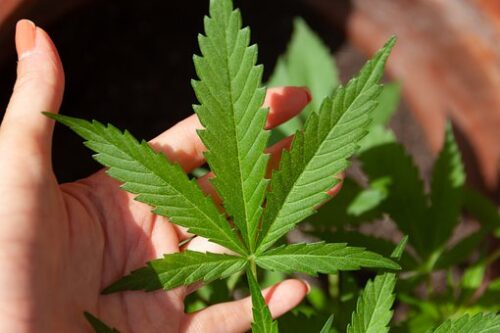CBD And The Big Screen:
Exploring the Relationship Between CBD and Cinema
The relationship between CBD and cinema is undeniably strong. From the earliest silent films to modern blockbusters, marijuana has been used as a plot device to examine societal norms. In recent years, as attitudes toward cannabis products, like CBD gummies UK, have softened in many parts of the world, movies have become prominent with explicit portrayals of recreational use and humorous takes on stoner culture. Films offer commentary on more severe issues surrounding cannabis laws, while others use its longstanding reference points for slapstick comedy. These products have also become a frequent topic of documentaries that explore its place in society from both sides of the debate. No matter how it’s portrayed, one thing is clear: these gummies remain an integral part of cinema today.
6 Ways To Explore The Relationship
Between CBD and Cinema
1. The depiction of CBD and its effects on movie characters.
The depiction of cannabis products, like gummies, in cinema has had a long and varied history, and its influences are often seen in the characters portrayed. From being used as a source of comedy to exploring how CBD can influence behavior, movies have provided an essential platform to examine the varied relationship between Cannabidiol products, like gummies and cinema. Throughout different decades, there have been various examples of how these gummies are referenced in movies, whether directly or indirectly. Many classic films throughout the years have had characters that explore the effects of consuming tobacco products and alcohol while also including nuanced references to CBD use. While there is no denying that many people gain enjoyment through watching characters use substances in popular media, it is also important not to underestimate the power and impact these depictions may have on people’s opinions and behavior towards these substances.
2. How CBD is portrayed in terms of social acceptability.
The changing social acceptability of CBD has been an essential topic in cinema. Various films have explored how society views marijuana, from comedies to dramas and action movies. Cannabidiol has been featured prominently in some productions, while others have taken a subtler approach, presenting characters’ different reactions to the substance. This range of portrayals provides viewers with insight into both the positive and negative aspects of CBD use and acceptance within society. With its ability to explore complex themes, it’s no wonder this is one of the fundamental ways cinema remains relevant in today’s culture.
3. How different cultures view Cannabidiol use in cinema.
CBD and cinema have a longstanding relationship in many different cultures. From the counterculture depictions of the use of Cannabidiol gummies to the influx of marijuana-focused films in modern times, these representations can vary from country to country. Cultures are renowned for their positions on CBD use and appear regularly in the media, often depicting it positively. In contrast, other countries with stricter laws carry a record of stringent punishments for drug-related activities. While significant motion pictures generally adhere to various legal standards worldwide, regional, smaller-budget films tend to explore local perceptions at length, giving viewers greater insight into modern opinions on this subject. How Cannabidiol gummies are ultimately portrayed within cinematic works often depends on who’s behind them and makes for an exciting exploration into what our societies value most – now and throughout history.
4. The positive and negative representations of CBD in film through history.
CBD has always been a fascinating topic of discussion in film. Through the years, it has been represented in an array of ways – both negatively and positively. For example, early films showed Cannabidiol being smoked by criminals or comedic drifters. In contrast, more modern films have adopted a different approach that often paints a humorous but neutral picture of Cannabidiol users. This shift in representation may suggest that the public’s view on CBD gummies has shifted, though this theory remains up for debate. While it is impossible to paint all types of cinema with the same brush strokes when discussing CBD portrayal, it cannot be denied that the relationship between cannabis components and film has been an integral part of cinema history.
5. The impact of media representations on attitudes towards Cannabidiol use.
Media representations have had a noticeable impact on popular perceptions of CBD. Cinematic works, from art house stoner classics to blockbuster comedies, have shaped the conversation around Cannabidiol use, providing a lens into the various cultural perspectives on marijuana consumption. Representations range from exaggerated stoner stereotypes to nuanced uses in medical settings and beyond. From historical accounts of the need for several governments to moving depictions of medical marijuana, audiences are exposed to different arguments and conversations about the plant, which can help establish more informed opinions.
6. Using CBD-related product placements as a marketing tool in past and present films.
The role of CBD-related product placements in films has always been an exciting topic to explore. From the first use of Cannabidiol in a mainstream film to its more prolific appearances during later decades and into today’s world of movies, it has come a long way. Not only do filmmakers use Cannabidiol gummies as part of their artistic vision and storytelling techniques, but many brands use this marketing tool to feature their image or product on the big screen. Where once upon a time art imitates life, now life imitates art. As such, contemporary films have become an invaluable asset for businesses seeking product exposure to keep up with market trends that seek freshness and originality that transcends traditional types of advertising.
Conclusion
The big screen has offered a wide range of depictions of CBD, from comedic portrayals to more serious ones. It has often been used as a symbol or reflection of the current cultural landscape. For example, previously Cannabidiol was seen as a sign of rebellion and anti-establishment sentiment. In recent years, its portrayal has shifted to reflect the changing attitudes toward its use. Many films have also highlighted its potential risks and drawbacks when abused or misused. Though there are still many debates about the use of CBD today, most people agree that the usage of these products, like gummies, should be respected if it is managed responsibly. While this is an ongoing issue that needs further discussion, it is clear that Cannabidiol has impacted our culture and continues to do so through its presence on the big screen.


